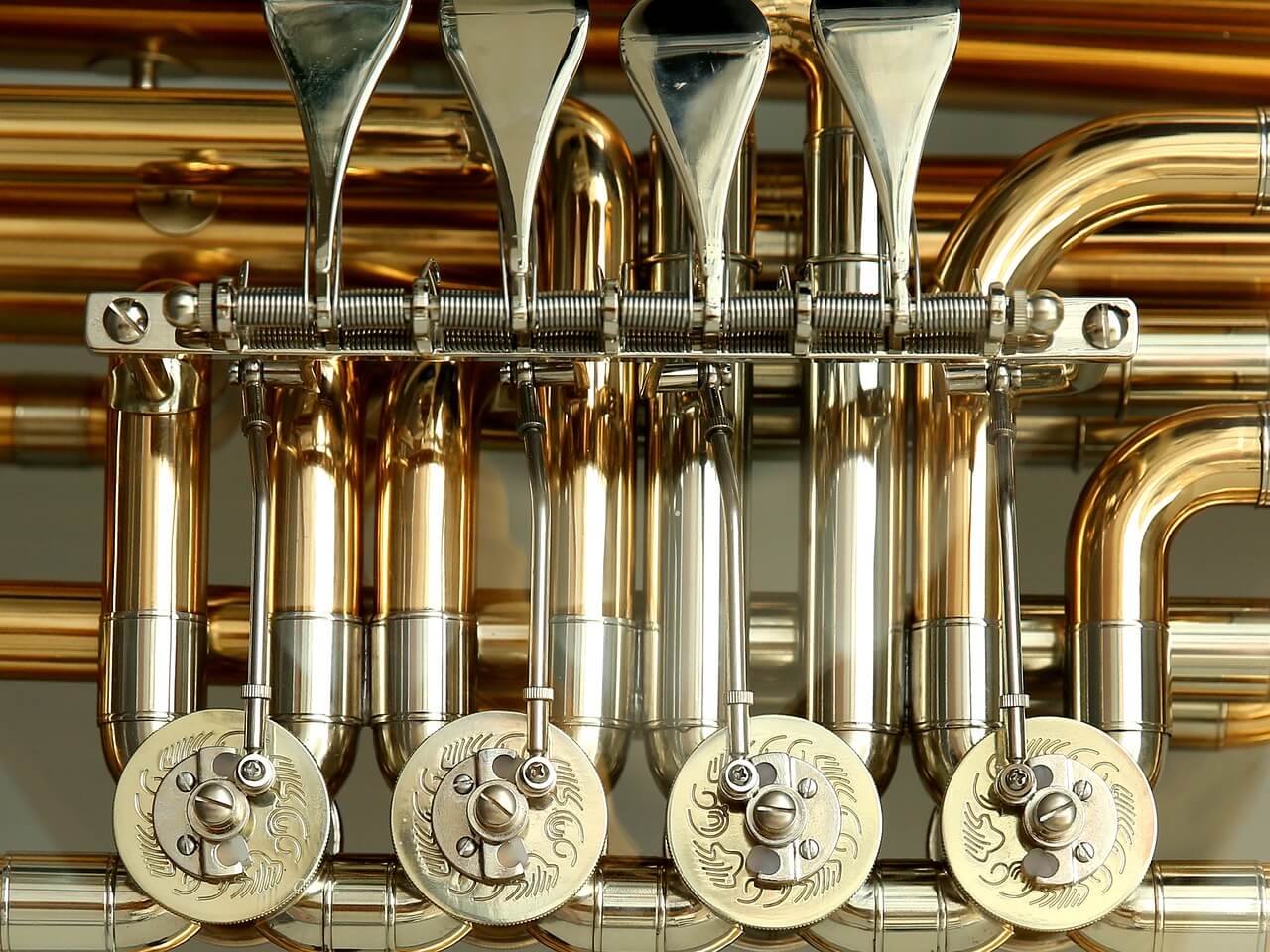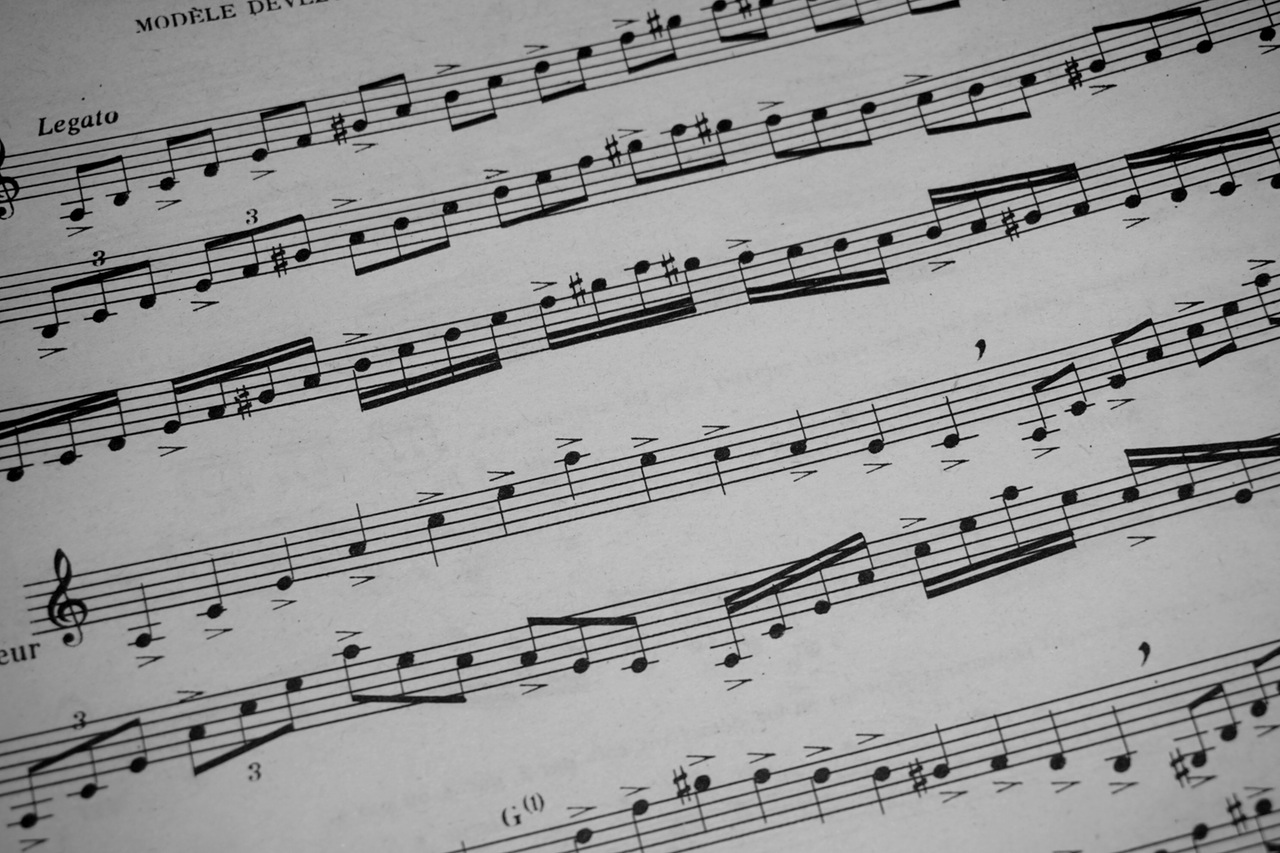Just a few days ago I played the first “normal” gig with my brass group – Small Batch Brass – that we have had in over a year and a half.
As you might expect, it was a lot of fun.
Small Batch started out as a standard brass quintet. Over the years, however, we’ve morphed into a New Orleans-inspired, brass quintet + drums group. Our tuba player switched from playing a “standard” tuba to a sousaphone, and I switch between French horn and mellophone, depending on the tune.
While there’s a lot to like (and not like) about the mellophone, one thing that I didn’t appreciate when I started using it more is that now I get to play with mutes!
French Horn Mutes
For French horn, there are only two or three types of mutes in regular, everyday use.
A straight mute is used whenever the composer calls for a mute. These come in a variety of materials, shapes, and sizes, but they are all basically the same.
A stop mute (or brass mute) can be used in place of the right hand for a “stopped horn” effect. Just like using your hand, though, you do have to transponse.
A practice mute is used to create a very quiet sound. These aren’t really used in performance, but instead in apartments, hotel rooms, or any time you need to practice but can’t make (much) noise.
One bonus mute I have that I’ve rarely used – a French horn cup mute. Cup mutes are mostly used by trumpet and trombone players in jazz or big band music. They give a softer, slightly more nasal tone, and the French horn cup mute does the same to the horn. I bought it many years ago to use in a musical pit (I forget which one) and it comes in handy once every few years.
Mellophone Mutes
For mellophone, a typical horn mute will be too big (and boring!).
However, trombones have a wide variety of mutes, and trombone bells/bell throats are similar in size to the average mellophone. (To be specific, trombone bells range in size from 8-10 inches, while mellophone bells are around 10 inches).
Over the pandemic I tried out a few different mutes, and the Stonelined Trombone Cup Mute and the Denis Wick Trombone Harmon mute both work really well.
However, there are a lot of options from trombone that have potential. Bucket mutes, plunger mutes, regular old straight mutes, etc.
While I can’t say that either of these will fit your mellophone exactly (mello bells vary quite a bit), they do seem to stay in pretty securely (although I usually hold them in) and don’t seem to do anything too weird to the pitch. At least nothing weirder than a normal mellophone.
Additionally, I’m not exactly sure how these would work in a marching French horn. Remember that a marching French horn is essentially a re-wrapped (and re-tapered) Bb single French horn. As such, they generally have a bigger bell – although not as big as a regular French horn. I’d be worried about the trombone mutes falling out, but I’ve not tried this.
You can see how the trombone mutes compare to horn mutes in the mellophone below:

Trombone mutes on the left, horn mutes on the right 
Horn straight mute in the mellophone. Close, but not quite. 
Horn cup mute in the mellophone. Not even close. 
Trombone cupe mute in the mello. The cup is a little small, but it’s still effective. 
Harmon mute in the mellophone. Fits great (this is my favorite).
When I Use Mello Mutes
It’s great to have these mute options when playing a melody or counter melody with either the trumpet(s) or trombone, since they use these kinds of mutes quite often in different arrangements.
I don’t know that they would be much use out on the marching field, but if you have occasion to play a mellophone indoors (pep band?) and you need a muted sound, try out some trombone mutes – you may be surprised at the results!










